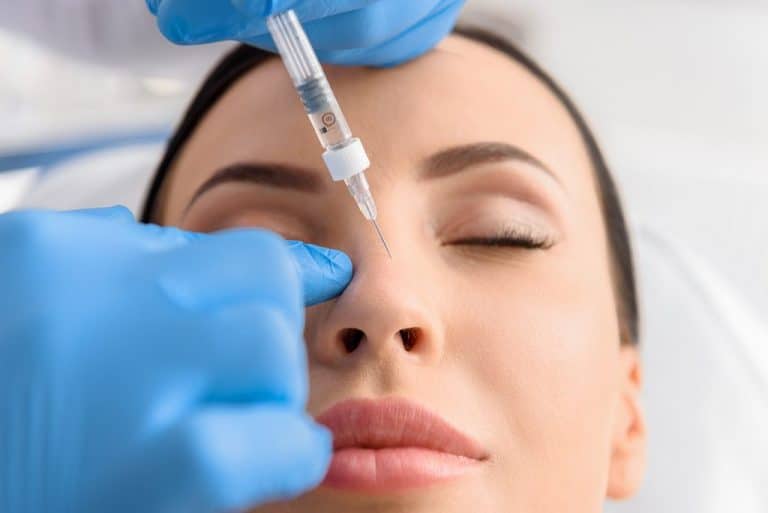Healing Beauty: A Comprehensive Guide to Mommy Makeover Scars Recovery
Mommy makeovers have become a beacon of hope for many seeking to reclaim their pre-pregnancy bodies, yet the prospect of scars can cast a shadow on the decision. With advancements in surgical techniques aiming to minimize and strategically place incisions, understanding the healing process and scar management is crucial. This post delves into what patients should anticipate in terms of scarring from mommy makeovers, offering insights into both preparation before surgery and care strategies afterwards that can influence the final appearance of scars.
Overview of Mommy Makeover Procedures and Associated Scars
Procedure Types
Mommy makeovers combine different surgeries. Each targets post-pregnancy body changes. Common procedures include tummy tucks, breast lifts, augmentations, and liposuction.
The first step often involves a tummy tuck. This reduces excess skin and tightens abdominal muscles. Breast lifts or augmentations restore pre-pregnancy breast shape and volume. Liposuction removes stubborn fat deposits.
Scar Locations
Scars are a surgery byproduct. Their location depends on the procedure type.
A tummy tuck scar runs across the lower abdomen, usually hidden under bikini lines. Breast lift scars might circle around the areola or run down to the breast crease in a lollipop pattern; for augmentations, incisions may be under the breasts or around nipples.
Liposuction scars are smaller but located where fat was removed—often hips, thighs, or abdomen.
Scar Variability
Scar appearance varies with each procedure’s nature.
Tummy tuck scars can be long but typically fade over time; they’re placed discreetly too. Breast surgery scars depend on incision types used; they can also become less noticeable as they heal.
Liposuction leaves minimal scarring due to small incision size required for cannula insertion during fat removal process.
Factors Influencing the Healing of Mommy Makeover Scars
Genetic Impact
The way scars heal can vary from person to person. Genetics play a crucial role in this process. Some individuals have a natural ability to heal quickly and with less scarring. Others might be prone to keloids or hypertrophic scars, which are thicker and more visible.
Good genes can mean finer, less noticeable scars after surgery on areas like the abdomen muscles. However, genetics are out of our control. What we can manage is how we treat our bodies before and after surgery.
Care Post-Op
After a mommy makeover, proper care is essential for minimal scarring. Following your surgeon’s advice closely helps prevent complications that could worsen scarring.
Keep incisions clean to avoid infection. Use recommended scar creams or gels. Avoid strenuous activity that may strain the healing area. These steps aid in producing smoother, less prominent scars over time.
Lifestyle Choices
Lifestyle has a significant influence on scar healing as well. Smoking restricts blood flow, hampering the body’s repair mechanisms. It’s best to quit smoking before undergoing any surgical procedures.
Nutrition also affects how your body heals:
- Eat plenty of proteins.
- Include vitamins C and E in your diet. These nutrients support skin regeneration and strength, leading to better scar healing post-mommy makeover.
Incision Placement and Its Impact on Scar Visibility
Strategic Incisions
Surgeons plan incisions carefully. They aim to reduce scar visibility. Common sites are beneath the bikini line or around the belly button.
The incision location depends on the procedure. For tummy tucks, surgeons often hide scars within natural body creases. This makes them less noticeable when healed.
Effective Wound Care for Improved Scar Healing
Cleanliness Key
Proper wound care is crucial after a mommy makeover. Keeping the wound clean helps prevent infection. This step is essential in the scar healing process.
Clean your incision with recommended solutions only. Use mild soap and water or saline, as advised by your surgeon. Pat dry gently with a clean towel.
Dressing Choices
The right dressing supports optimal healing. Your doctor will suggest what to use on your scars.
Silicone gel sheets are often chosen for their role in collagen production within tissue. They keep the area moist, which can aid recovery. Change dressings as instructed to maintain cleanliness.
Sun Protection
Scars are sensitive to sunlight during recovery. Protecting them from UV rays is important.
Cover scars with clothing or use sunscreen if exposure cannot be avoided. Follow guidelines on when it’s safe to apply sunscreen directly on scars.
Remember these points:
- Keep wounds clean always.
- Choose dressings wisely and change them regularly.
- Shield scars from the sun throughout recovery.
Techniques and Treatments to Minimize Scarring
Silicone Therapy
Silicone sheets or gels are often recommended for scar management after a mommy makeover. These products work by hydrating the scar tissue, which can reduce scar size and color. They should be applied to the healing skin once the surgical incisions have closed.
Applying silicone sheets is simple:
- Clean and dry the affected area.
- Cut a sheet to fit over your scar.
- Press it firmly onto your skin.
Use these sheets daily for best results. Some people see improvements in just a few weeks. Others may need longer-term use.
Scar Massage
Professional scar massage techniques can also help minimize scarring from cosmetic surgery. Massaging scars helps break down tough scar tissue, making them softer and less visible. It’s important to wait until your doctor says it’s safe before starting massages.
When massaging scars:
- Use gentle pressure.
- Move fingers in circles over the scarred areas.
- Do this several times a day for effectiveness.
Massage not only improves appearance but also increases flexibility around tight muscles near surgical sites.
Laser Solutions
Laser treatments offer another option for those looking to reduce visible scarring from mommy makeovers. Lasers can target excess pigmentation and encourage new, healthy skin growth at the site of an old scar.
During laser treatment:
- A specialist uses devices that emit concentrated light beams onto scars.
- This process may take multiple sessions depending on severity and age of scars.
While lasers are effective, they might come with side effects like redness or swelling temporarily after each session.
Timeline and Stages of Scar Maturation Post-Mommy Makeover
Initial Healing
After a mommy makeover, the initial healing period is crucial. This phase lasts from surgery to around two weeks post-operation. During this time, scars are often red and raised. They may feel tender or itchy.
Patients should keep the area clean to avoid infection. Follow-up with your surgeon is important for monitoring progress.
Color Changes
Over time, scar color transitions through several stages. In the first few months, scars can appear red or purple due to increased blood flow aiding in healing.
By six months, many women notice their scars becoming lighter in color. The transition from red to pink indicates ongoing maturation.
Texture Transformation
The texture of scars also evolves after surgery. Initially firm and possibly uneven, they gradually soften as part of natural healing processes.
Around three months post-surgery, patients typically report less prominence in scar texture as tissues settle and heal further.
First-Year Milestones
During the first year post-mommy makeover, there are key milestones:
- At 3-6 months: Scars start fading.
- By 9 months: Most significant changes occur; scars become flatter and softer.
- After one year: Scars reach maturity; final appearance becomes more apparent though subtle improvements may continue over time.
Monitoring these changes helps manage expectations regarding scar maturation after pregnancy-related surgeries.
Revision and Non-Surgical Options for Scar Improvement
Surgical Criteria
After a mommy makeover, some women may need scar revision. This is considered when scars are:
- Thick or raised
- Wide or long
- Darker than surrounding skin
Only certain scars meet the criteria for surgical revision. They must be fully healed and matured, typically after one year. A plastic surgeon will assess if surgery can improve the scar’s appearance.
Surgery involves cutting out the old scar. The surgeon then closes the new wound carefully to create a less noticeable scar.
Injectable Treatments
Injectable treatments offer another way to enhance scar appearance without surgery. Examples include:
- Steroid injections: Reduce inflammation and flatten raised scars.
- Fillers: Elevate depressed scars to match surrounding skin levels.
These injectables help by breaking down excess collagen in thickened scars. They also stimulate healthy tissue growth for better healing.
Non-Invasive Methods
Non-surgical methods are popular among women seeking minimal downtime options:
- Microneedling: Tiny needles puncture the skin to promote natural healing.
Microneedling stimulates collagen production, improving texture over time.
- Laser therapy: Uses light energy to resurface skin and lessen discoloration.
Different lasers target specific issues like redness or dark pigmentation.
Other non-invasive techniques include:
- Silicone gel sheets: Flatten and soften hypertrophic scars with pressure.
- Topical creams with ingredients like vitamin E or onion extract that may reduce scarring when used consistently over months.
Setting Realistic Expectations for Post-Surgery Scars
Scar Outcomes
After a mommy makeover, scars are inevitable. The procedures often involve breast implants and other surgeries that can leave marks. However, these scars usually fade over time. Patients should expect a normal range of outcomes which include:
- Thin lines at incision sites.
- Redness that gradually turns to white.
- Variation in scar visibility depending on skin type.
It’s important to understand that complete scar elimination is not possible. The goal is improvement in appearance and confidence, not perfection.

Surgeons aim to minimize scarring as much as they can. They strategically place incisions where they can be hidden by clothing or the natural contours of the body.
Surgeon Communication
Communication with your surgeon before surgery helps set expectations about scarring. Ask questions like:
- Where will the scars be located?
- How noticeable might they be?
Your surgeon will explain what you can expect based on their experience and your body’s characteristics.
Patients should also discuss post-surgical care techniques with their surgeon to aid healing and reduce scarring visibility.
Remember, patience is key during recovery; it takes time for scars to settle into their final state.
Closing Thoughts
Mommy makeovers offer transformative results, yet they inherently come with scarring. Understanding the factors that influence healing, incision placement strategies, and effective wound care are crucial for optimal scar maturation. Techniques such as laser therapy and silicone sheets can further minimize scarring appearance. Patients must maintain realistic expectations, recognizing that scars are a natural outcome of surgery but can be managed and improved over time.
Considering the journey to reclaim one’s body post-pregnancy, it is essential to consult with experienced professionals who provide guidance tailored to individual cases. For those considering a mommy makeover, proactive engagement in scar management should be part of the preoperative plan. Take the next step towards your aesthetic goals by scheduling a consultation with a certified surgeon to discuss your options and expectations regarding scars after a mommy makeover.
Frequently Asked Questions
What are the common scars associated with mommy makeovers?
Mommy makeover procedures typically result in surgical scars, often located at incision sites such as the abdomen for tummy tucks and the breasts for augmentation or lifts.
How long does it take for mommy makeover scars to heal?
Scars from a mommy makeover generally mature over 1 to 2 years. The initial healing phase, when scars are most noticeable, usually lasts several weeks to months.
Can the placement of incisions affect how visible my scars will be?
Yes, strategic incision placement can significantly reduce scar visibility. Surgeons aim to place incisions in less conspicuous areas like natural skin folds or regions covered by clothing.
What wound care practices can improve the healing of my mommy makeover scars?
Effective wound care includes keeping the area clean, following your surgeon’s instructions on dressing changes, and avoiding strain on the incision sites during recovery.
Are there techniques available to minimize scarring after a mommy makeover?
Yes. Silicone sheets or gels, laser treatments, steroid injections, and microneedling are among various methods used to minimize scarring post-surgery.
Is it possible to revise or improve mommy makeover scars non-surgically?
Non-surgical options such as fillers, laser therapy, and topical treatments can enhance the appearance of scars without additional surgery.
Should I expect my mommy makeover scars to disappear completely over time?
It is unrealistic to expect complete disappearance of surgical scars; however, they should significantly fade and flatten out over time with proper care.






